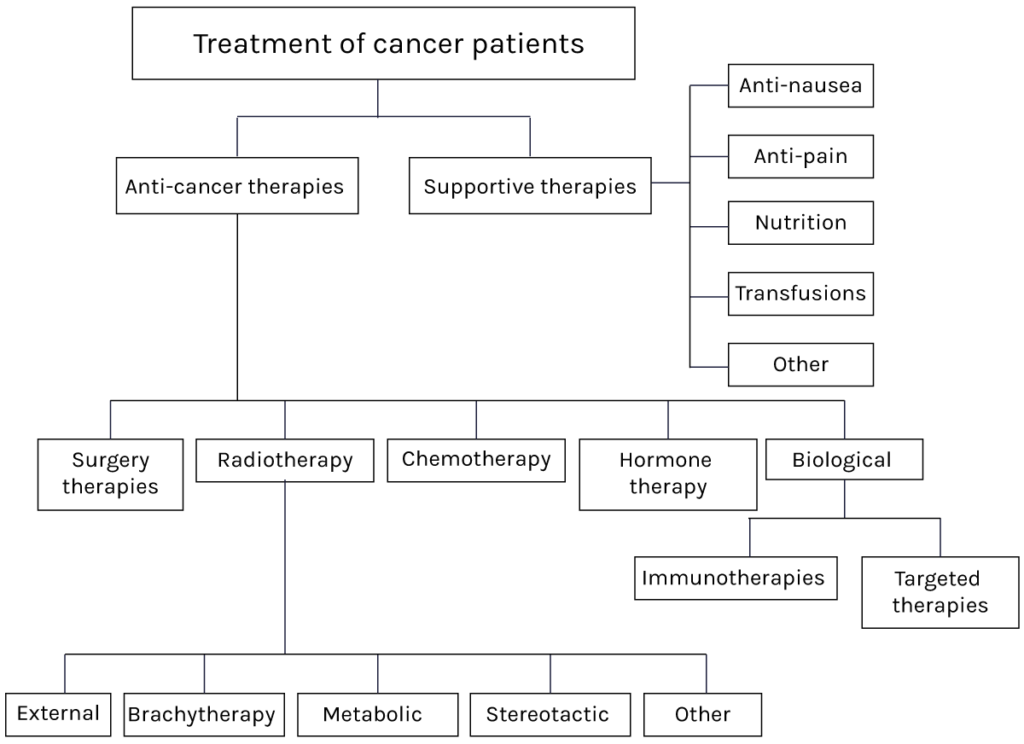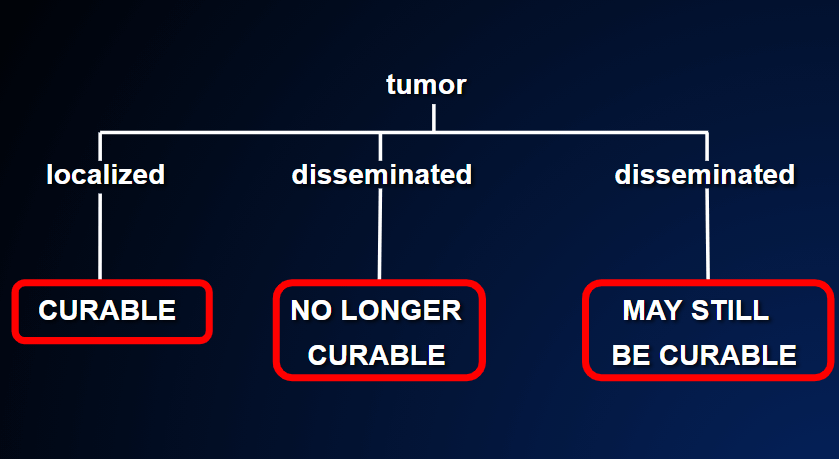There is a lot of confusion about the definition and the names of these new biological therapies. Such terms as biological therapies, molecular targeted therapies, intelligent drugs, antibodies, immunotherapics, etc., can all be found. For simplicity, we can divide biological therapies into molecular targeted therapies and immunotherapies, FIGURE 5.

Unlike chemotherapy, which destroys the tumor cells (and, unfortunately, also damages healthy cells) molecular targeted drugs block specific functions of the tumor cells, arresting their growth or, if their vital functions are blocked, killing them.
In the case of immunotherapy, these drugs block the inhibitory action that the tumor exerts on our immune system. Indeed, the tumor prevents our immune system from working properly. When these immunotherapy drugs are administered, the immune system starts to work again; the tumor cells are recognized as foreign bodies and are rejected.
However, for biological therapies to work, there must be a specific target in the tumor cells; this target consists of proteins or DNA alterations, which can be identified by means of very sophisticated molecular tests.
If the target is present in the tumor cells, these new drugs generally achieve very good results. However, if there is no target, they are of no use and may sometimes actually cause harm.
If the target is present in the tumor cells, these new drugs generally achieve very good results. However, if there is no target, they are of no use and may sometimes actually cause harm.
These new biological drugs are very costly. For this reason, they are prescribed only under strict control by the Ministry of Health; in order to prescribe them, oncologists have to obtain authorization from the Ministry and submit the results of the molecular tests performed.
This means that, before these drugs can be prescribed, molecular tests have to be performed and their results must be favorable (presence of specific molecular alterations). These tests are carried out on the surgical specimen of the primary tumor, when this is available; otherwise, a new biopsy will need to be taken in order to provide material for the tests.
These new biological therapies are remarkably successful. Indeed, patients with the right molecular characteristics can achieve very long-term survival, whereas chemotherapy alone and the other classic therapies do not offer more than 12-18 months of life, on average.
Growing numbers of patients who were judged to be incurable in the past are now alive and well 3, 5 or 7 years after their diagnosis. Until just a few years ago, a classic distinction was made between curable and incurable patients. Now, however, it is becoming clear that there is an “intermediate” group of patients between these two categories, FIGURE 4.

In this third group of patients, therapy blocks the progression of the disease for long enough to hope that a cure can be achieved. As yet, it is still too early to say how the tumor will evolve in patients of this third group. However, the results yielded so far by biological therapies in patients with advanced disease, such as melanomas and tumors of the lung, kidney, ovary, bladder and breast, have already fostered this hope in a fair percentage of patients (10-30%). Unfortunately, however, in the case of many other tumors, such as those of the pancreas, stomach, colon, rectum, liver and brain, these encouraging results have not yet been achieved, except in very rare cases of patients with exceptional molecular alterations.
In general, the side-effects of biological drugs are less severe than those of classical chemotherapy. But this is not always the case.
- Molecular targeted drugs can cause very serious skin rashes, which may be harder to tolerate than the typical disorders caused by chemotherapy, such as nausea, vomiting and hair loss.
- Immunotherapy can cause autoimmune forms of pneumonia or colitis, which may even be fatal. Fortunately, these extreme effects are very very rare.
